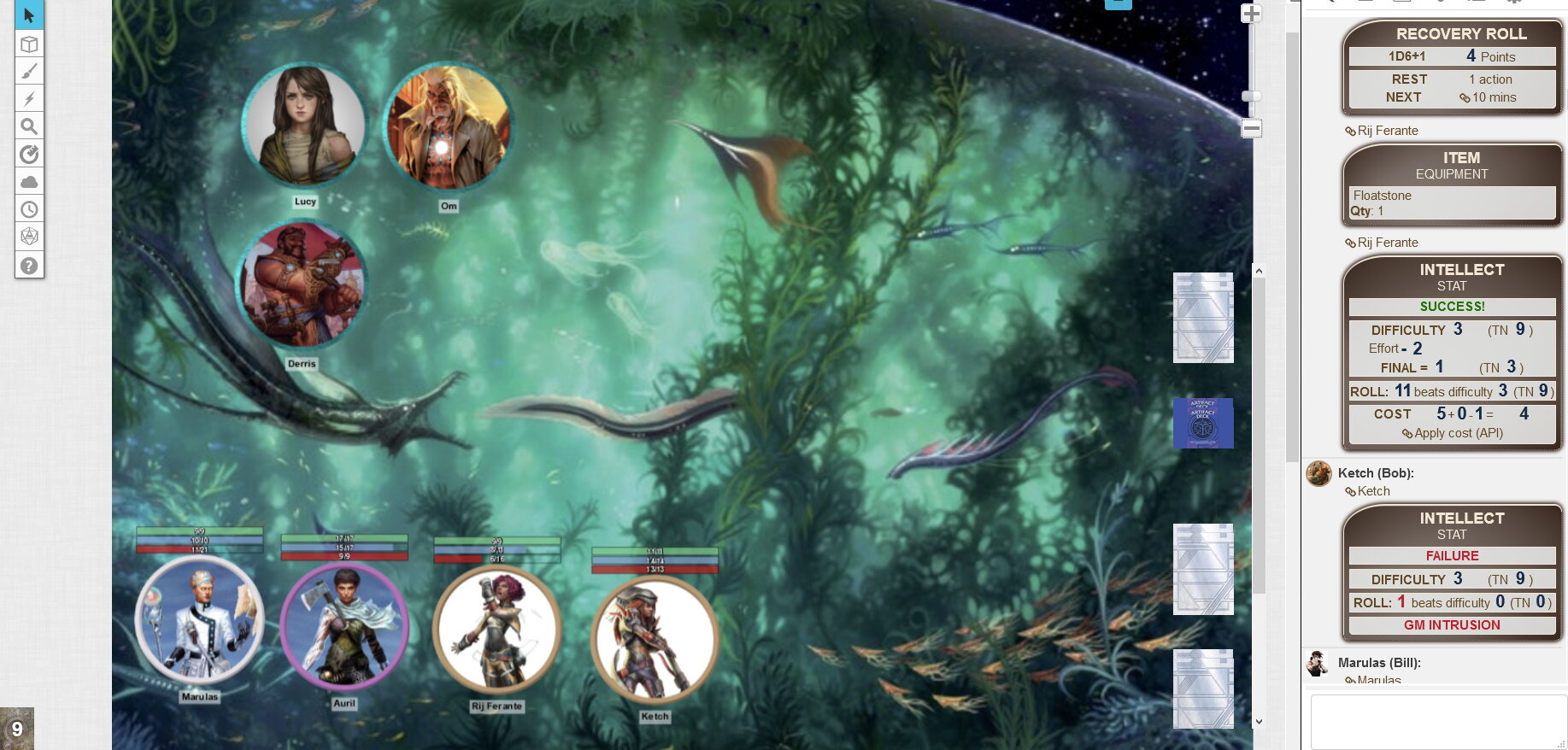Roll20 for non-Tactical Games
There are plenty of articles about using virtual tabletops like Roll20 to do tactical gaming like D&D and its many offspring. This isn’t one of them. We’re talking about when you play more narrative games like Blades in the Dark, Call of Cthulhu, FATE, GUMSHOE, Numenera, and the like.
Hate Virtual Tabletops? You’re in Luck!
For those that have never clicked with virtual tabletops, you don’t need them to run narrative games. Discord or some similar service to do voice and share images is all you need. People who do D&D theater of the mind can go this route too.
Why Use a VTT?
There are many reasons to use a virtual tabletop for narrative games.
You are already comfortable with one (or more). Maybe you’ve been playing tactical games on a VTT and switch systems. Most or all your players are also comfortable there. Why move?
Automated character sheets. Tired of teaching new Numenera players how to spend effort? The Cypher Systems by Roll20 character sheet will walk the players through it. Automated sheets take some of the work off the GM’s and players shoulders.
Integrated dice rollers. You can add dice bots to Discord, but I’ve found some players have a hard time without a graphical interface.
Built in organization for game components. Roll20 has support for handouts, cards, and graphics. Once you’ve shared a handout with players, they always have access to it.
Lots of publisher support. I’m particularly impressed with Evil Hat’s offerings on Roll20. I have also had good experiences with Pelgrane Press and Monte Cook Games wares for Roll20. I’m sure theres many more I don’t yet know about.
FATE of Cthulhu Character sheet
Why Roll20?
It’s the most popular VTT, has a free version, and supports more narrative based games than any other VTT I know. Most of what I say here applies to Astral, Fantasy Grounds, Foundry, and the others.
Mapless Map Layer
You can use the Roll20 map layer for a lot more than gridded tactical maps. For narrative games, think of it as a background image. Turn the grid off, and load in an image that works well with your game. Use the images from the PDF of your game. Or, an internet search will come up with images of almost anything gameable you can think of. Pinterest is great as well.
The image could set the tone, convey information about the scene, or just look cool. Sometimes all three.
Tokens
I use tokens to do things like show hit points or similar PC resources. For example, in Numenera, I make all three bars visible, and use Bar 1 for Might, Bar 2 for Speed, and Bar 3 for Intellect. This gives all players a quick visual take on the condition of the party. Anyone need healing? Should we take a rest? A half second scan of the tokens is perfect for this.
Playmat
Build (or purchase) a playmat that has all the information your players need to play. Keep the GM secrets on the GM layer. Check out this playmat from Evil Hat for their Fate of Cthulhu game.
Return of the Map
Whenever you want, you can bring back the map, gridded or gridless. Using a map with dynamic lighting is great for chills and thrills in horror roleplaying. What’s around that corner? Move your token and roll for a shattered psyche.
From the upcoming Ashen Stars adventure, Dark Entanglement, where the PCs investigate a derelict starship oosing with corruption.
Have you used a VTT for a narative roleplaying game? What worked well for you? What didn’t? Let me know in the comments below.









